20 Remedies For Appendicitis Surgery Pain & Prevention Tips
Soothe the associated pain with these pantry ingredients and make faster recovery.
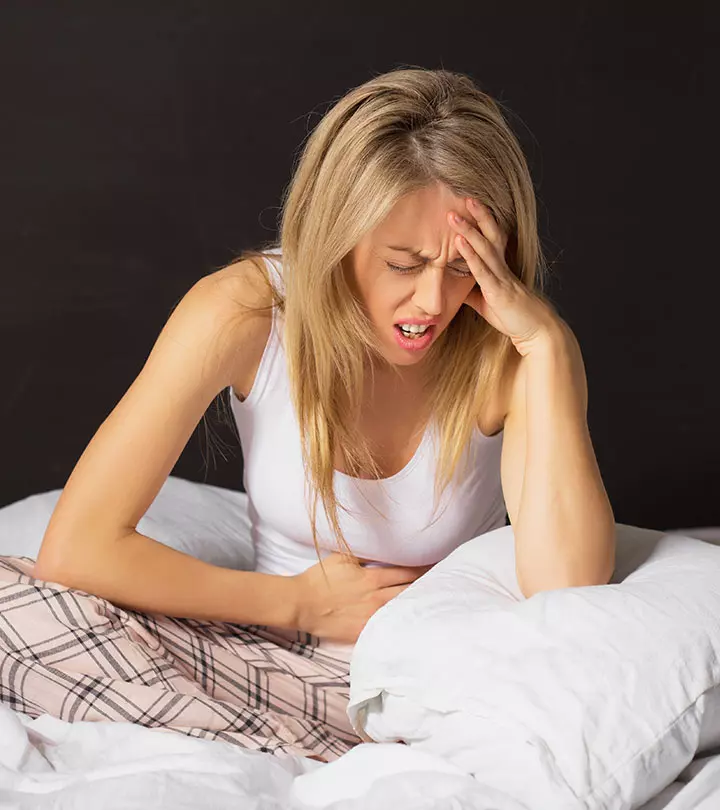
Image: Shutterstock

Located in the lower right side of the abdomen, the appendix is a small, thin tube that can cause many complications if infected. Appendicitis is a medical condition that develops when the appendix is blocked and becomes inflamed with pus, causing a lot of pain and discomfort. A simple surgery removes the inflamed appendix, but the pain post-surgery can be difficult. The good news is, there are some natural remedies for appendicitis surgery pain that can provide some relief.
A long time ago, the appendix played an essential role in the daily functioning of the body. It used to house bacteria that helped in the digestion of cellulose. But, as humans evolved from herbivores to omnivores, this function became obsolete, rendering it an organ with no purpose. In this article, we explore the causes, symptoms, and naturopathic remedies you can try to get post-surgery relief.
 Did You Know?
Did You Know?In This Article
Home Remedies For Pain After Appendicitis Surgery
1. Castor Oil
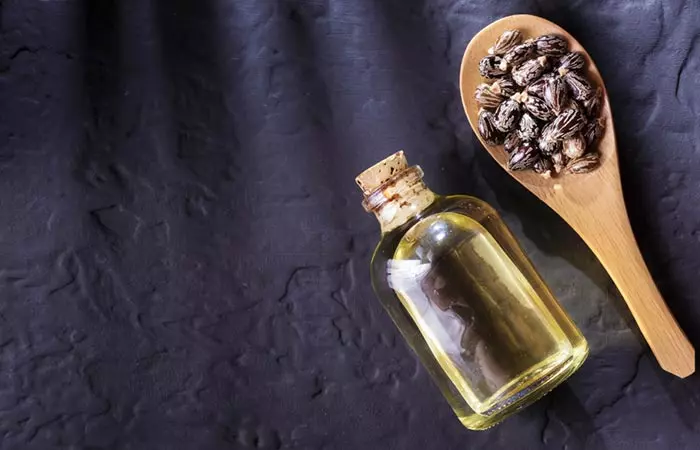
Castor oil contains ricinoleic acid. The acid possesses anti-inflammatory and analgesic properties (1). The topical application of this holistic remedy may alleviate the pain.
You Will Need
- 2 tablespoons castor oil
- A flannel cloth
What You Have To Do
- Fold the flannel cloth and pour the castor oil on it.
- Place it on the affected area for a couple of minutes.
Note:
Castor oil’s anti-constipation properties may help in relieving constipation and the appendix pain it is causing.
How Often You Should Do This
Do this 2 times a day.
2. Apple Cider Vinegar
ACV is anti-inflammatory (2). This may tone down the pain one experiences post-surgery.
You Will Need
- 1 tablespoon apple cider vinegar
- A glass of warm water
What You Have To Do
Add the vinegar to the water and sip on it.
How Often You Should Do This
Start drinking this as soon as you experience pain.
3. Buttermilk
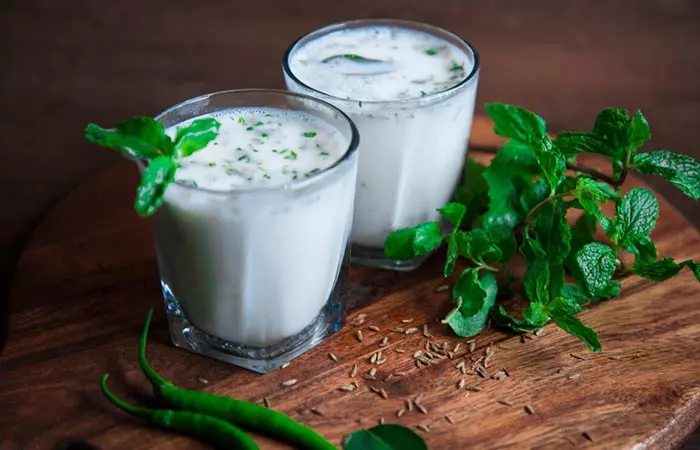
Anecdotal evidence suggests that drinking fluids like buttermilk may be beneficial for appendicitis. It is digestive-stimulating and a wonderful probiotic concoction that may help deal with any infection.
You Will Need
1 liter buttermilk
What You Have To Do
- Chill the buttermilk in the refrigerator for a couple of minutes.
- Drink this over the course of the day.
You can also make mocktails with buttermilk. Make a mocktail with buttermilk, grated cucumber, ginger, mint, and coriander. You can also make a light smoothie with buttermilk and a fruit of your choice.
How Often You Should Do This
Do this once a day.
4. Baking Soda
Baking soda
is believed to have anti-inflammatory properties. Thus, it may soothe the digestive system and reduce the pain due to appendicitis. However, there is no scientific evidence to back this claim.
You Will Need
- 1 teaspoon baking soda
- A glass of water
What You Have To Do
Mix the baking soda powder in water and drink it immediately.
How Often You Should Do This
Do this whenever you experience pain.
5. Garlic
Garlic possesses anti-inflammatory, anti-fungal, anti-bacterial, anti-viral, anti-parasitic, anti-tumor, and anti-cancer properties (3). The anti-inflammatory compounds may reduce the pain. The antimicrobial compounds may get rid of harmful bacteria, fungi, viruses, and parasites.
You Will Need
1-2 garlic cloves
What You Have To Do
Crush the cloves and ingest them with water.
How Often You Should Do This
Do this when you experience any pain.
6. Green Tea
Green tea
contains antioxidants and anti-inflammatory compounds (4). This may alleviate the pain to a great extent.
You Will Need
- 1 green tea bag
- A cup of hot water
- Honey (to taste)
What You Have To Do
- Steep the green tea bag for a couple of minutes in hot water.
- Remove the tea bag. Add honey to the decoction and mix well.
- Drink this herbal tea while it is warm.
How Often You Should Do This
Do this 2 times a day
7. Ginseng Tea
Ginseng is a Chinese herb. It contains saponins, which exhibit strong anti-inflammatory properties (5). This may be beneficial for reducing inflammation and pain.
You Will Need
- 1-2 teaspoons ginseng
- A cup of boiling water
What You Have To Do
- Add the herb to the hot water and let it steep.
- When the tea cools down, drink it.
- You may also soak the herb in cold water and drink it.
How Often You Should Do This
Do this 2 times a day.
8. Green Gram
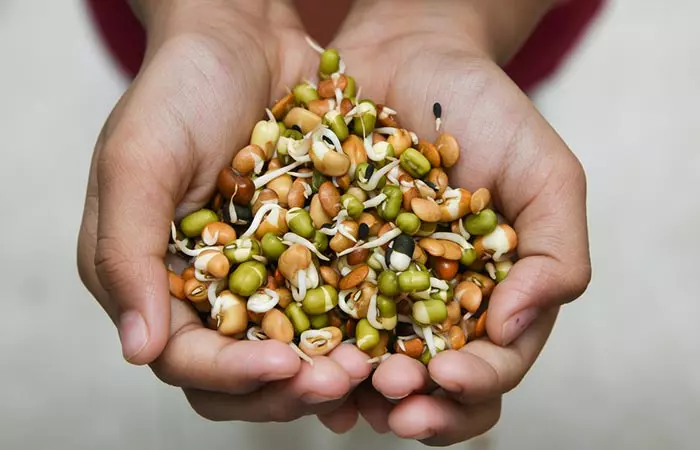
Green gram or mung beans are highly nutritive and contain anti-inflammatory compounds (6). Hence, they may help in reducing pain caused due to appendicitis.
You Will Need
Green gram or mung beans
What You Have To Do
- Rinse the green gram thoroughly and soak it in water overnight.
- Once the beans have absorbed the water and become plump (and are almost sprouting), you can eat them raw or steam them. You can also sauté them very lightly with some veggies and make a simple salad.
How Often You Should Do This
Do this when your abdomen hurts.
9. Vitamins
Research has shown that vitamin deficiency may cause an inflammation of appendicitis (7). Hence, a healthy and nutritional diet rich in vitamins B, C, and E may be beneficial.
Note: Consult a doctor before taking additional vitamin supplements.
 Trivia
Trivia10. Honey And Lemon Juice
Honey and lemon both possess strong anti-inflammatory properties (8), (9). Hence, these may be good for reducing pain due to appendicitis.
You Will Need
- 1 tablespoon organic honey
- 1 tablespoon lemon juice
What You Have To Do
Mix the two ingredients and drink the mixture. As the mixture has a really strong taste, if you want, you may mellow it down with warm water.
How Often You Should Do This
Do this once a day.
11. Mint
Mint exhibits strong antioxidant properties and regulates digestive processes (10). This may be beneficial to appendicitis patients.
You Will Need
- 4-5 fresh mint leaves
- A cup of boiling water
- 1/2-1 teaspoon honey
What You Have To Do
- Soak the mint leaves in hot water for 5-10 minutes.
- Strain the herbal tea prepared and add a bit of honey to it.
- Drink this tea.
How Often You Should Do This
Do this for an anti-nausea, anti-vomiting, anti-flatulence, anti-diarrheal and pain-relieving effect.
12. Juice
Carrot juice is helpful in alleviating pain and fighting infection (11). Beetroot is helpful for detoxifying the body (12). Drinking small amounts of vegetable or fruit juice may help combat the pain after appendicitis surgery.
You Will Need
Carrot juice OR beet and cucumber juice OR cranberry juice
What You Have To Do
Extract some fresh juice using the mentioned vegetables and fruits and drink it.
How Often You Should Do This
Do this on a regular basis.
13. Fenugreek Seeds
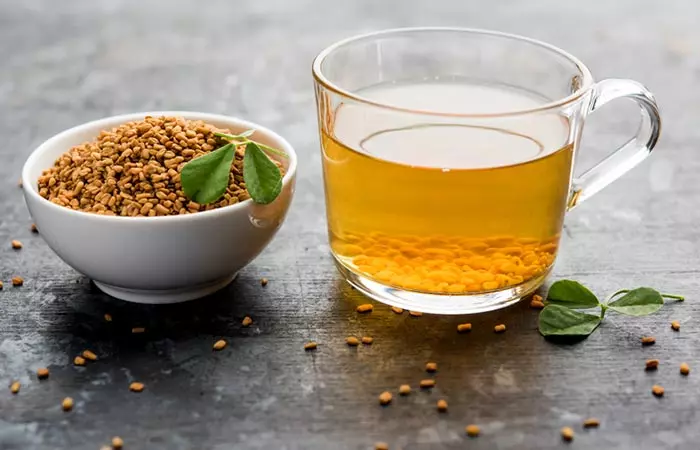
Fenugreek seeds contain a wide range of antioxidants and anti-microbial and anti-pyretic compounds (13). These compounds may help in combating the pain and preventing further infection.
You Will Need
- 2 teaspoons fenugreek seeds
- A cup of water
What You Have To Do
- Add the fenugreek seeds to water and bring it to a boil.
- Let it stay on low heat for 10-15 minutes.
- Strain and drink the resulting concoction.
How Often You Should Do This
Do this once a day.
14. Ginger And Turmeric Mix
Turmeric contains a compound called curcumin that exhibits strong anti-inflammatory properties (14). Ginger also possesses anti-inflammatory properties (15). Thus, these two may help in combating appendicitis surgery pain.
You Will Need
- 1/2 inch ginger piece
- A pinch of turmeric
- 1 teaspoon honey
What You Have To Do
- Chop the ginger and add it to the honey.
- Add the turmeric powder to this and mix well.
- Ingest this mixture.
How Often You Should Do This
Do this when you experience nausea and pain.
15. Basil Leaves
Basil has various therapeutic effects (16). This may prove beneficial as it relieves indigestion and constipation.
You Will Need
- 5 basil leaves
- 1/4 teaspoon rock salt
- A pinch of black pepper powder
- 2-3 tablespoons plain yogurt
What You Have To Do
- Crush the basil leaves and add this along with the other ingredients to the yogurt.
- Mix well.
- Consume this mixture
How Often You Should Do This
Do this 2 times a day.
16. Whole Wheat
Whole wheat flour contains dietary fiber that aids the swift movement of feces in the body (17). It is available in supermarkets and may be used to bake bread. The sterilized bran obtained from wheat may be added to refined flour to make healthier bread that is bowel-regulating and has more roughage. Brown bread is made from whole wheat flour, so switch to it instead of white bread.
17. Gotu Kola
Gotu kola, medicinally known as Centella asiatica, is a Chinese herb. It contains antioxidants and anti-inflammatory compounds that accelerate healing (18). This may help in reducing pain caused due to appendicitis.
You Will Need
- 1 teaspoon dried gotu kola herb
- A cup of hot water
What You Have To Do
- Brew fresh herbal tea by soaking the herb in hot water for a few minutes.
- Strain and sip on this tea.
How Often You Should Do This
Do this 2-3 times a day.
18. Dandelion
Dandelion has antioxidant properties (19). This may help in reducing pain. It is also a mild laxativei A substance effective in increasing the bulkiness, mobility, and frequency of bowel movements and relieving temporary constipation. and may clear up constipation.
You Will Need
- 1 dandelion herb capsule
- 1-2 tablespoons lemon juice
- A cup of warm water
What You Have To Do
- Open the capsule carefully and empty the contents into a cup of warm water.
- Add lemon as per your taste and mix well.
- Drink this mixture.
How Often You Should Do This
Do this 2 times a day.
Note: People with diabetes, kidney disorders, and gallbladder diseases should not consume this herb. Also, do not use this remedy if you are taking any blood pressure or blood-thinning medications.
19. Agrimony
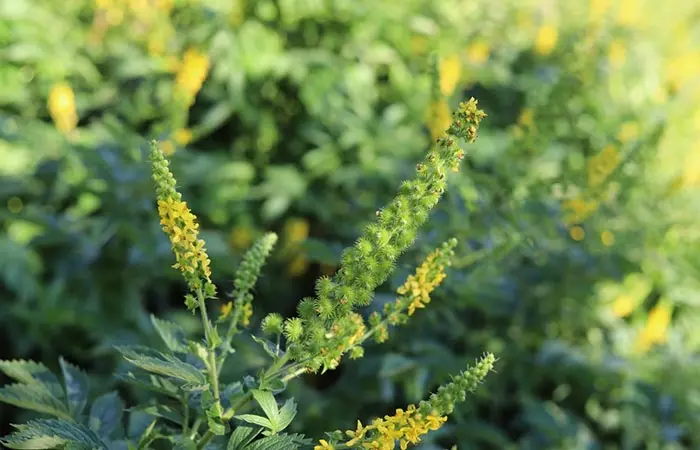
Agrimony is a Chinese herb that possesses antioxidant properties (20). This may be beneficial to the digestive system.
You Will Need
- 1 teaspoon agrimony herb
- A cup of water
What You Have To Do
- Bring the water to a boil and add the dried herbs.
- Let it simmer for 10 minutes and then take it off the heat.
- Once the herb has stepped well and the concoction is cold, strain it and drink.
How Often You Should Do This
Do this 2 times a day.
Note: This remedy is not recommended for people with diabetes, kidney disorders, and gallbladder diseases.
20. Coconut Oil For Appendicitis
Extra virgin coconut oil is believed to have potential benefits for individuals with appendicitis due to its anti-inflammatory and antimicrobial properties (21). The medium-chain fatty acids in coconut oil may support the immune system and help combat inflammation, possibly alleviating the symptoms of appendicitis (22).
You Will Need
Extra virgin coconut oil
What You Have To Do
- Consume one to two tablespoons of extra virgin coconut oil.
- You can take it directly or incorporate it into your meals by regularly using it in cooking or mixing it into beverages.
How Often You Should Do This
Do this once a day.
For those seeking home remedies for digestive problems, incorporating these remedies into your diet could be a natural way to aid in digestion and alleviate discomfort. Apart from the above-mentioned remedies, the best way to deal with appendicitis surgery pain is to take preventive measures. A few tips are listed below.
Key Takeaways
- Start with non-invasive home remedies like consuming garlic, mint, buttermilk, and more to ease appendicitis.
- Increase your intake of fibrous foods to prevent appendicitis.
- Consume probiotic-rich foods to promote gut health.
- Avoid consuming spicy, fried, or processed food to avoid further inflammation.
- The common symptoms of appendicitis are nausea, diarrhea, fever, and abdominal swelling.
Prevention Tips
- Follow a plant-based diet containing a healthy amount of fresh fruits and vegetables.
- It is important to supply enough fiber to the body so that the digestive process is smooth and does not lead to complications like appendicitis. Eat fiber-rich foods, like whole grains, split peas, lentils, black beans, lima beans, peas, artichokes, and okra.
- Drink 10-12 glasses of water every day.
- Apart from water, you may also have fresh fruit and vegetable juices.
- Probiotics, such as yogurt, buttermilk, and kefir, supply healthy bacteria to the gut and regulate digestion.
- Exercise regularly so that the body functions optimally in general. It may also help in fighting constipation.
Diet is one of the keys to staying healthy. Below is the recommended diet to prevent appendicitis.
Diet For Appendicitis
Appendicitis is caused due to backing up of waste matter in the body. A great way to flush that out is by drinking lots of water. A cleanse diet is often recommended for appendicitis, where you just drink water and fruit and vegetable juices for a couple of days. Apart from these recommendations, here are a few items you should avoid:
- Processed meat and canned food
- Spicy and fried food
- Fatty meat
- Bakery items made from refined flour
- Flatulence inducing food items like beans and broccoli
- Sugary foods
- High-fat food items and oils
- Alcohol
- Caffeinated and carbonated drinks
One of the main causes of blockage of the appendix is feces or a foreign object. Some of the other causes of the inflammation are listed below.
What Causes Appendicitis?
- Gastrointestinal infection or infection in any other part of the body, causing enlargement of the tissue inside the appendix
- Inflammatory bowel disease
- Parasites
- Tumor
- Trauma to the abdomen
- Constipation
Some of the symptoms of this condition are mentioned below.
Signs And Symptoms Of Appendicitis
- Pain in the abdomen that starts at the belly button and moves to the lower right region (This pain starts suddenly and gets worse with time.)
- Nausea and vomiting
- Loss of appetite
- Diarrhea or constipation
- Low fever
- Difficulty in passing gas
- Abdominal swelling
According to research, appendicitis is one of the most frequent reasons for urgent abdominal surgeries in the United States, with more than 200,000 instances per year. It mainly affects people between the ages of 5 and 45, though it can happen at any age, with men being somewhat more at risk.
Shellie Lianne, a YouTuber, recounted her struggle with appendicitis and shared her experience. In her vlog, she says, “I started to have a pain like right near my belly button, and I was like what is this because I didn’t eat last night. By afternoon, it was actually worse, and this time pain had migrated to the lower right region (i).”
Types Of Appendicitis
- A) Acute Appendicitis – This is the most common type where the issue develops in a matter of a few hours to a few days. It is a rather sudden development that causes extreme pain. Infections may easily develop in this type of appendicitis.
(b) Chronic Appendicitis –
Constituting only 1.5% of the total appendicitis cases reported, this type of appendicitis may last for a longer period. The symptoms may recur at intervals as the inflammation of the appendix organ goes back and forth.
The nature of appendicitis can only be determined by a licensed physician. Your doctor may perform some tests to diagnose your condition. Learn more about it below.
How Is Appendicitis Diagnosed?
To diagnose appendicitis, your doctor may first ask about your symptoms and patient history, followed by a physical examination. After this, they may recommend laboratory testing to check your white blood cell count. An elevated level of these may indicate infection or inflammation. Your doctor may also recommend further imaging tests like CT scan, ultrasound, or MRI to understand your condition better (23).
Comparatively, chronic appendicitis is more difficult to diagnose, but nonetheless, both types have surgery as their leading treatment option. Learn more about appendicitis treatment methods in the next section.
Appendicitis Treatment
Your doctor may prescribe antibiotics as an initial treatment option for appendicitis. However, their effectiveness is still a matter of debate (23).
The traditional and most effective treatment for appendicitis is surgery that removes the inflamed appendix. Out of all the surgical options, laparoscopic appendectomy is quite popular. It uses small incisions and a laparoscope that helps guide the surgeon to remove the appendix (23).
Given below are some of the risk factors associated with appendicitis.
Appendicitis Risk Factors
- Right lower quadrant pain for more than six months.
- Patients with diarrhea, fatigue, upper abdominal pain, and anorexiai A psychological eating disorder caused by a constant fear of gaining weight, leading to an abnormally low body weight. .
- Delay in the admission into a hospital after the onset of symptoms.
- Older age
- Existing cystic fibrosisi A genetic disorder affecting the lungs and digestive tract to produce thick and sticky fluids and mucous, thereby causing coughing and fatty stools. condition.
Infographic: Dos And Don’ts After Appendicitis Surgery
It may take 2-6 weeks to heal from appendicitis surgery, depending on the type of surgery you had. While you may follow the remedies to manage pain, you must follow certain dos and don’ts to speed up healing. Check the infographic below for more information.
Some thing wrong with infographic shortcode. please verify shortcode syntax
Appendicitis, or the inflammation of the appendix, can be caused due to blockage by feces or health conditions like gastrointestinal infection, tumors, inflammatory bowel disease, constipation, abdominal injury, and parasites. While the appendix can be removed through surgery, the post-operative pain can be debilitating. To get relief and avoid excessive traditional painkillers, you can opt for some home remedies for appendicitis surgery pain. Green tea, castor oil, baking soda, Gotu kola, vitamins, green gram, basil leaves, etc., are a few of the options you can choose from. However, it would be best to use these remedies in conjunction with your prescribed medication for relief. Note that appendicitis is a serious health condition and needs immediate medical intervention.
Frequently Asked Questions
What does appendicitis feel like?
Appendicitis starts off with a dull pain around and below the navel, which then moves towards the left side of the lower abdomen. This pain starts to build up, and then, the other symptoms like nausea and vomiting present themselves.
How long does it take to recover after you have your appendix out?
For laparoscopic surgeryi Minimally invasive surgical procedure performed through a small incision on the abdomen or pelvis along with a camera. , it takes 1-3 weeks for recovery. For a normal open procedure, it takes 2-4 weeks.
What side is the appendix?
The appendix is present on the lower right-hand side of the abdomen.
Is appendicitis hereditary?
Appendicitis is not a genetic condition to be passed on from generation to generation.
How do you know your appendix is about to burst?
The pain, nausea, and vomiting get worse, and a fever develops. If not treated immediately, the appendix may also burst.
Can the pain from appendicitis come and go?
Initially, the pain may come and go, but later, it becomes constant. If the pain is inconsistent over weeks, you may be suffering from chronic appendicitis. Consult a doctor immediately in such a case.
How should I sleep after appendicitis surgery?
It is advisable to sleep straight on your back rather than your side or stomach after your appendicitis surgery.
Is egg good for appendicitis?
Yes, eggs that have been boiled, poached, or scrambled are easier to digest and are recommended for people after appendicitis surgery.
Illustration: Remedies For Appendicitis Surgery Pain & Prevention Tips
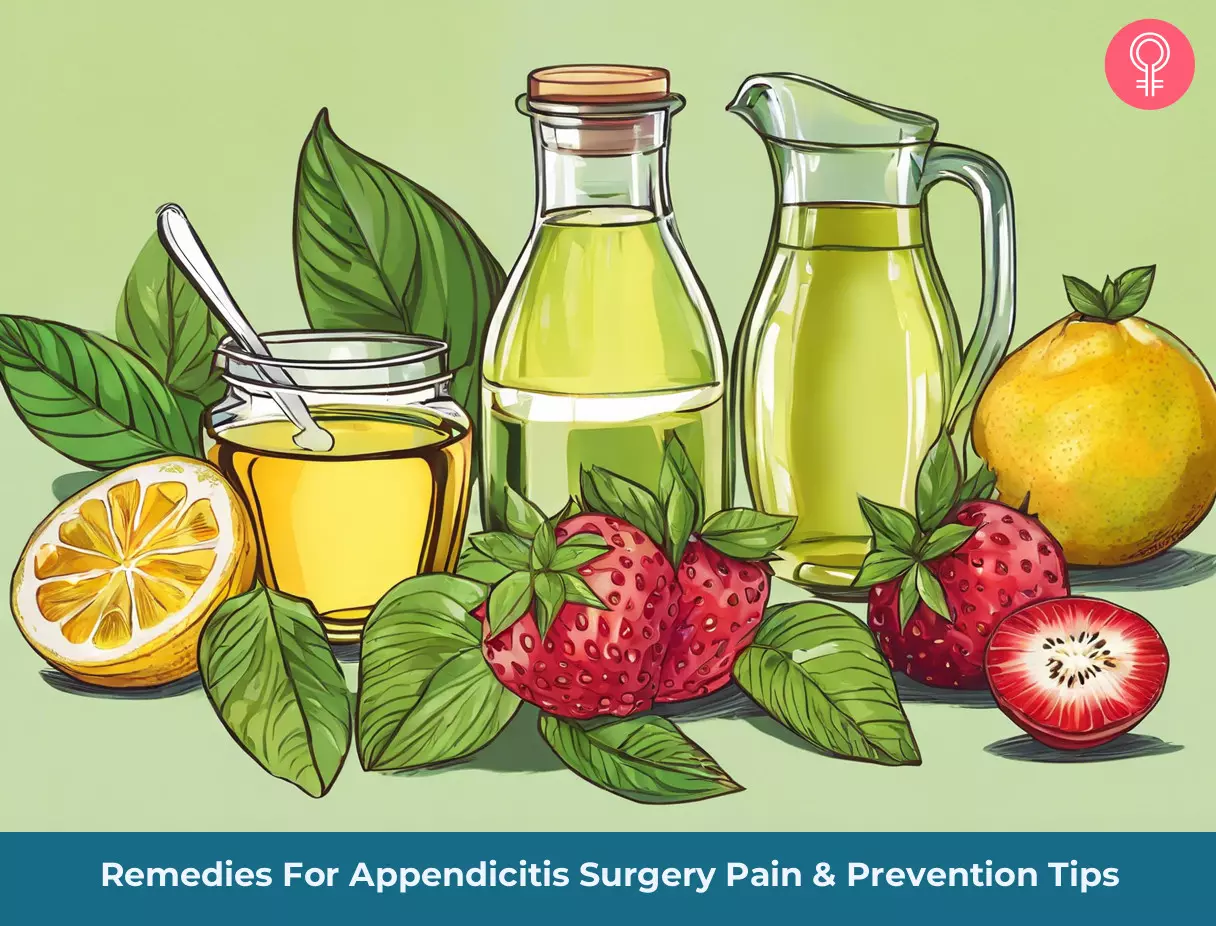
Image: Stable Diffusion/StyleCraze Design Team
References
Articles on StyleCraze are backed by verified information from peer-reviewed and academic research papers, reputed organizations, research institutions, and medical associations to ensure accuracy and relevance. Read our editorial policy to learn more.
- Vieira, Celme, et al. “Effect of ricinoleic acid in acute and subchronic experimental models of inflammation.” Mediators of inflammation 9.5 (2000): 223-228.
https://www.ncbi.nlm.nih.gov/pmc/articles/PMC1781768/ - Ross, Christine M., and John J. Poluhowich. “The effect of apple cider vinegar on adjuvant arthritic rats.” Nutrition research 4.4 (1984): 737-741.
https://www.sciencedirect.com/science/article/pii/S0271531784800494 - Bayan, Leyla, Peir Hossain Koulivand, and Ali Gorji. “Garlic: a review of potential therapeutic effects.” Avicenna journal of phytomedicine 4.1 (2014): 1.
https://www.ncbi.nlm.nih.gov/pmc/articles/PMC4103721/ - Chacko, Sabu M., et al. “Beneficial effects of green tea: a literature review.” Chinese medicine 5.1 (2010): 13.
https://www.ncbi.nlm.nih.gov/pmc/articles/PMC2855614/ - Park, Jin-Sun, et al. “Anti-inflammatory mechanism of ginseng saponins in activated microglia.” Journal of neuroimmunology 209.1-2 (2009): 40-49.
https://pubmed.ncbi.nlm.nih.gov/19232442/ - Zhang, Xiaowei, et al. “Chemical composition and antioxidative and anti-inflammatory properties of ten commercial mung bean samples.” LWT-Food Science and Technology 54.1 (2013): 171-178.
https://www.sciencedirect.com/science/article/pii/S0023643813001989 - Boland, Frank K. “VITAMIN DEFICIENCY AS A FACTOR IN THE ETIOLOGY OF SURGICAL DISEASES OF THE DIGESTIVE SYSTEM.” Annals of surgery 115.6 (1942): 939.
https://www.ncbi.nlm.nih.gov/pmc/articles/PMC1543879/?page=1 - Yaghoobi, Reza, and Afshin Kazerouni. “Evidence for clinical use of honey in wound healing as an anti-bacterial, anti-inflammatory anti-oxidant and anti-viral agent: A review.” Jundishapur journal of natural pharmaceutical products 8.3 (2013): 100.
https://www.ncbi.nlm.nih.gov/pmc/articles/PMC3941901/ - Tag, Hend M., et al. “Potential anti-inflammatory effect of lemon and hot pepper extracts on adjuvant-induced arthritis in mice.” The Journal of Basic & Applied Zoology 67.5 (2014): 149-157.
https://www.sciencedirect.com/science/article/pii/S2090989614000071 - Choudhury, R. Paul, A. Kumar, and A. N. Garg. “Analysis of Indian mint (Mentha spicata) for essential, trace and toxic elements and its antioxidant behaviour.” Journal of Pharmaceutical and Biomedical Analysis 41.3 (2006): 825-832.
https://www.sciencedirect.com/science/article/abs/pii/S0731708506001087 - Sharma, Krishan Datt, et al. “Chemical composition, functional properties and processing of carrot—a review.” Journal of food science and technology 49.1 (2012): 22-32.
https://www.ncbi.nlm.nih.gov/pmc/articles/PMC3550877/ - Clifford, Tom, et al. “The potential benefits of red beetroot supplementation in health and disease.” Nutrients 7.4 (2015): 2801-2822.
https://www.ncbi.nlm.nih.gov/pmc/articles/PMC4425174/ - Goyal, Shivangi, Nidhi Gupta, and Sreemoyee Chatterjee. “Investigating therapeutic potential of Trigonella foenum-graecum L. as our defense mechanism against several human diseases.” Journal of toxicology 2016 (2016).
https://www.ncbi.nlm.nih.gov/pmc/articles/PMC4739449/ - Menon, Venugopal P., and Adluri Ram Sudheer. “Antioxidant and anti-inflammatory properties of curcumin.” The molecular targets and therapeutic uses of curcumin in health and disease. Springer, Boston, MA, 2007. 105-125.
https://link.springer.com/chapter/10.1007/978-0-387-46401-5_3 - Grzanna, Reinhard, Lars Lindmark, and Carmelita G. Frondoza. “Ginger—an herbal medicinal product with broad anti-inflammatory actions.” Journal of medicinal food 8.2 (2005): 125-132.
https://www.liebertpub.com/action/oidcStart?redirectUri=%2Fdoi%2Fabs%2F10.1089%2Fjmf.2005.8.125 - Uma Devi, P. “Radioprotective, anticarcinogenic and antioxidant properties of the Indian holy basil, Ocimum sanctum (Tulasi).” Indian journal of experimental biology vol. 39,3 (2001): 185-90.
https://pubmed.ncbi.nlm.nih.gov/11495275/ - Olson, Alfred C., et al. “Monosaccharides produced by acid hydrolysis of selected foods, dietary fibers, and fecal residues from white and whole wheat bread consumed by humans.” Journal of agricultural and food chemistry 36.2 (1988): 300-304.
https://pubs.acs.org/doi/pdf/10.1021/jf00080a015 - Qureshi, Mahmood, et al. “Evaluation of neuropharmacological, analgesic and anti-inflammatory effects of the extract of Centella asiatica (Gotu kola) in mice.” African Journal of Pharmacy and Pharmacology 9.41 (2015): 995-1001.
https://www.researchgate.net/publication/290511221_Evaluation_of_neuropharmacological_analgesic_and_anti-inflammatory_effects_of_the_extract_of_Centella_asiatica_Gotu_kola_in_mice - Hu, Chun, and David D. Kitts. “Antioxidant, prooxidant, and cytotoxic activities of solvent-fractionated dandelion (Taraxacum officinale) flower extracts in vitro.” Journal of agricultural and food chemistry 51.1 (2003): 301-310.
https://pubs.acs.org/doi/abs/10.1021/jf0258858 - Jin, Z. X., and Bao-Qing Wang. “In vitro antioxidant activity of acetone extracts from Chinese herb agrimony leaves.” J. Med. Plants Res 5 (2011): 6005-6010.
https://citeseerx.ist.psu.edu/viewdoc/download?doi=10.1.1.970.7715&rep=rep1&type=pdf - In vitro anti-inflammatory and skin protective properties of Virgin coconut oil
https://www.ncbi.nlm.nih.gov/pmc/articles/PMC6335493/# - Coconut Oil and Immunity: What do we really know about it so far?
https://pubmed.ncbi.nlm.nih.gov/32602684/# - Appendicitis
https://www.ncbi.nlm.nih.gov/books/NBK493193/
Read full bio of Dr. Jill Carnahan
Read full bio of Sucharita Mishra
Read full bio of Arshiya Syeda
Read full bio of Dipti Sharma







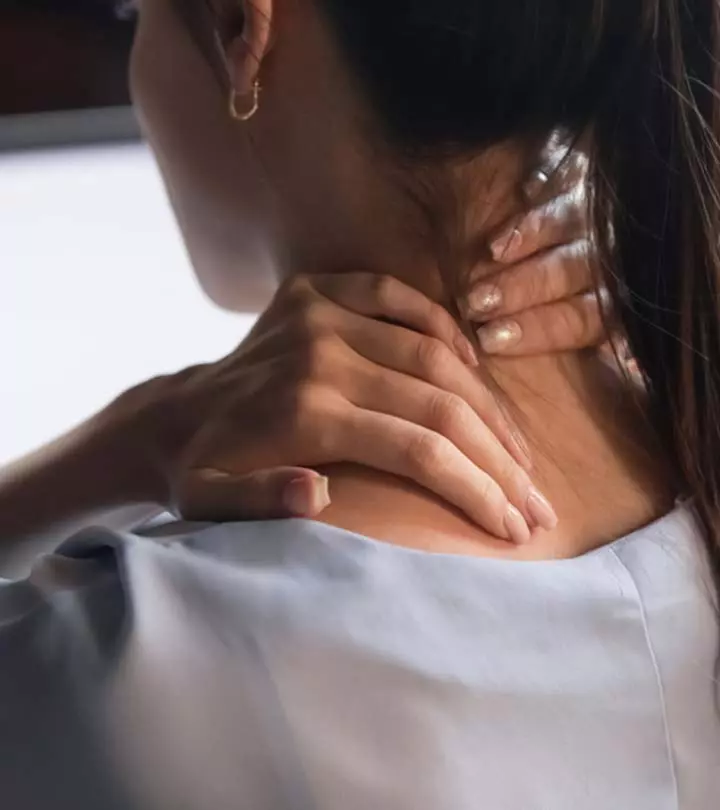
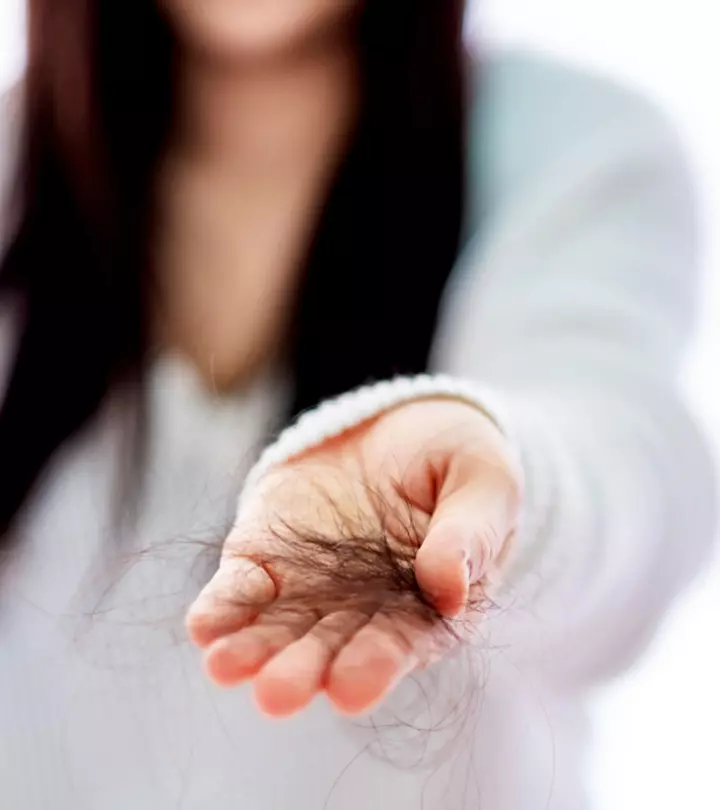
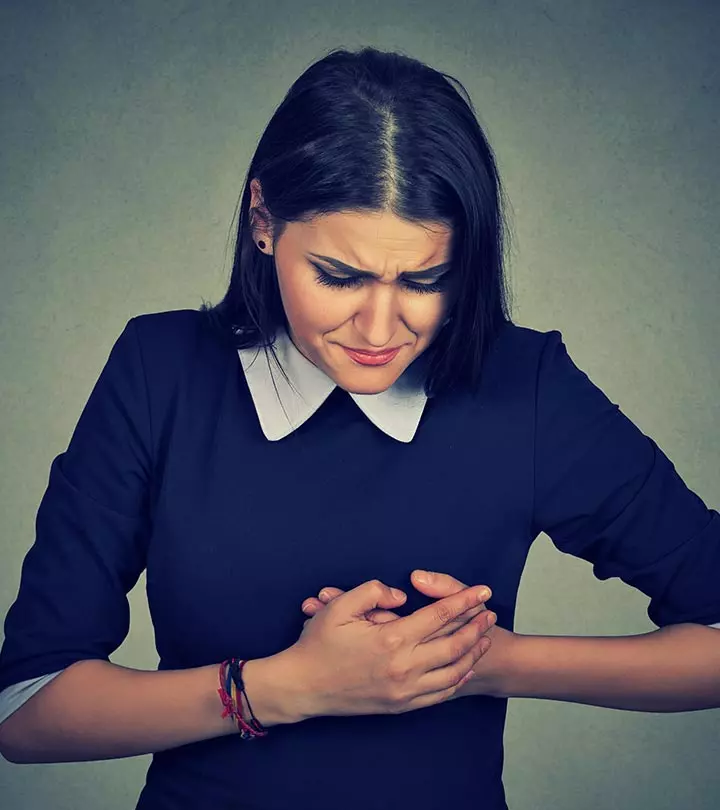
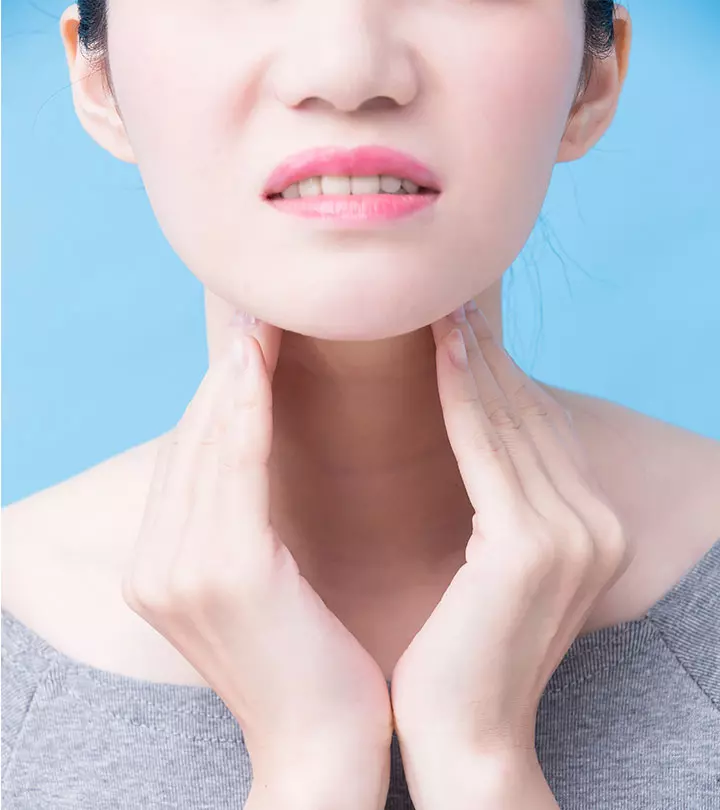


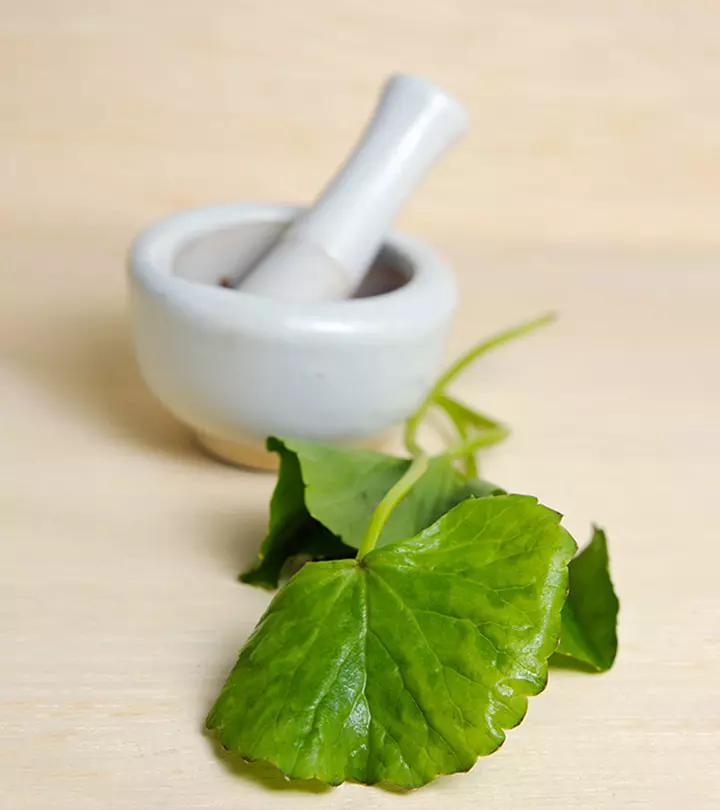


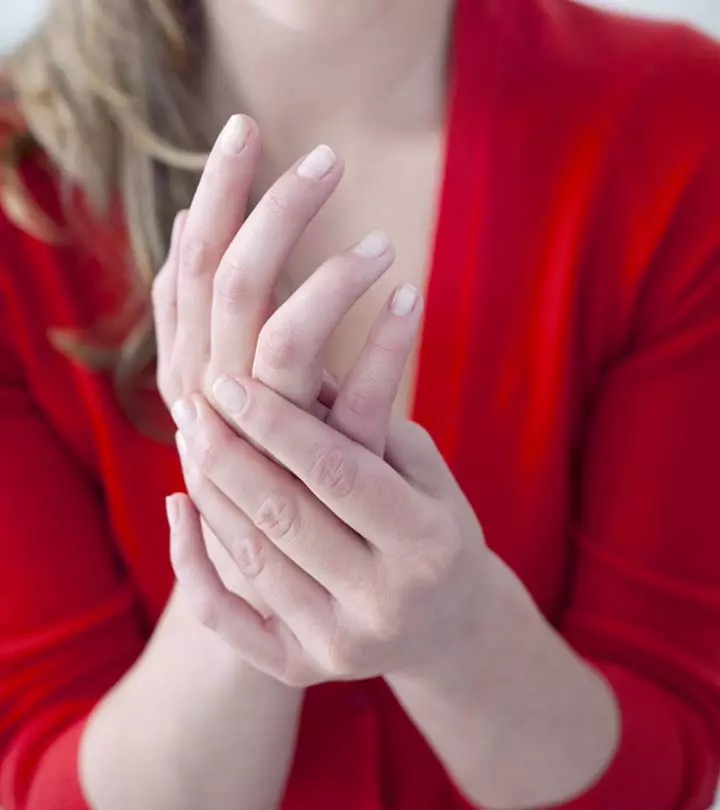

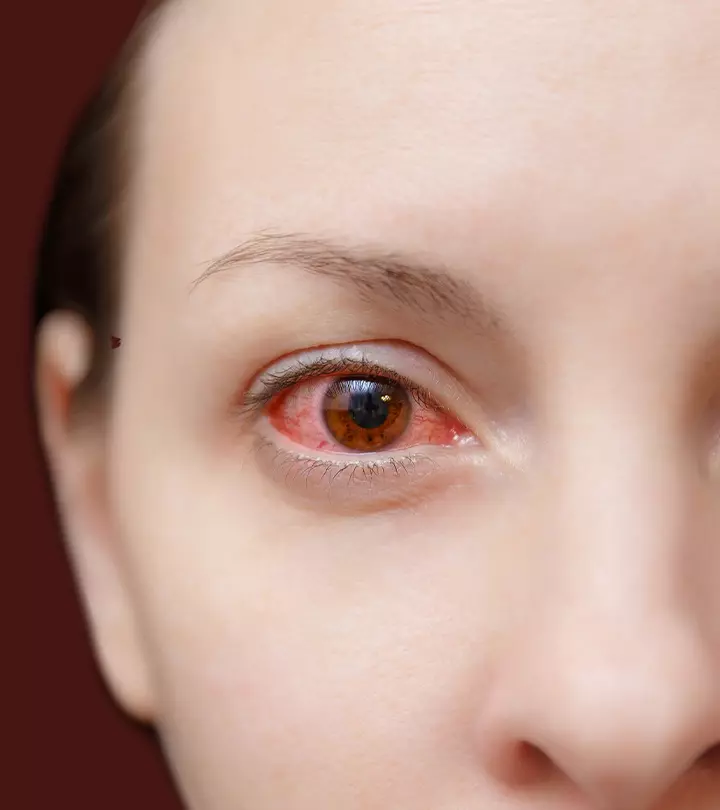




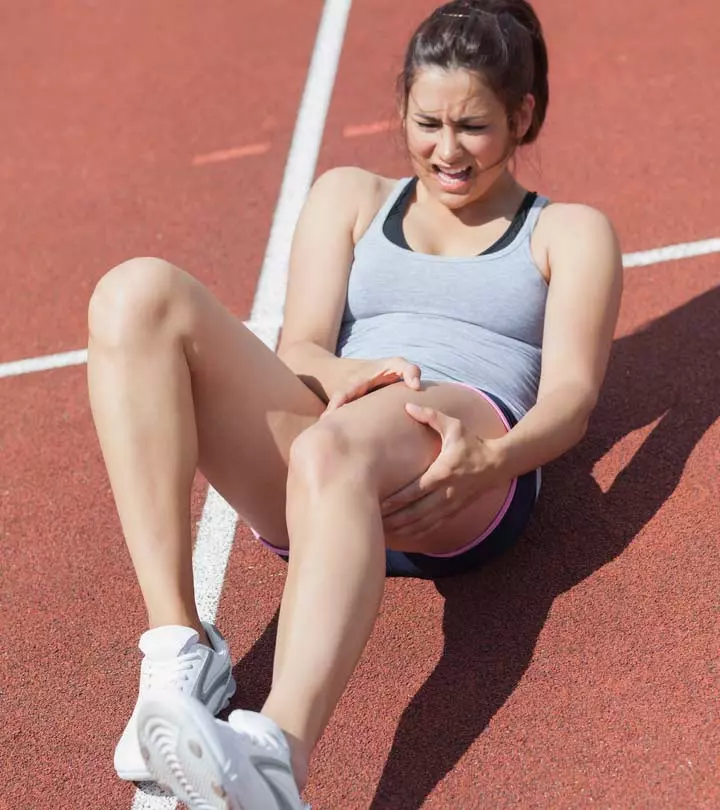
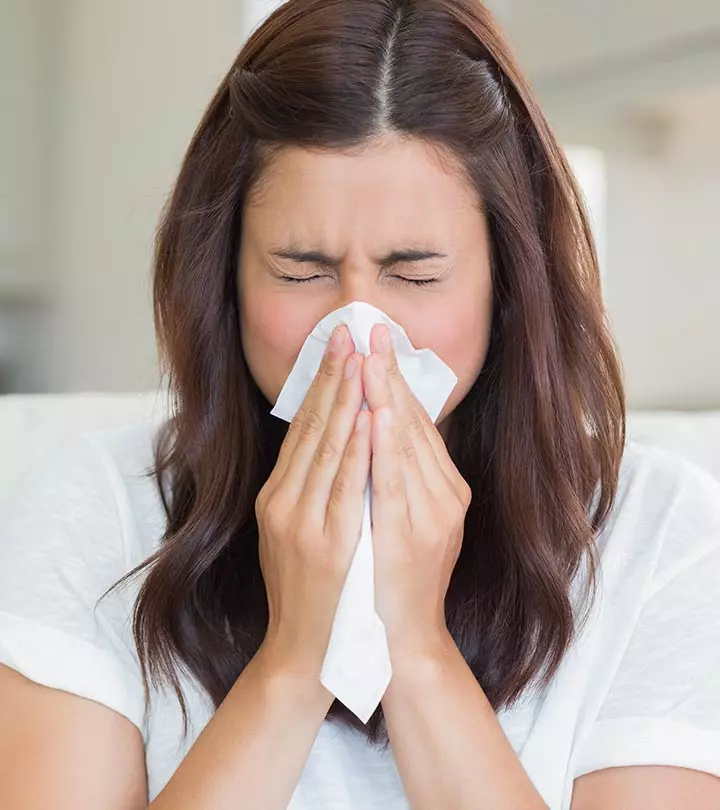
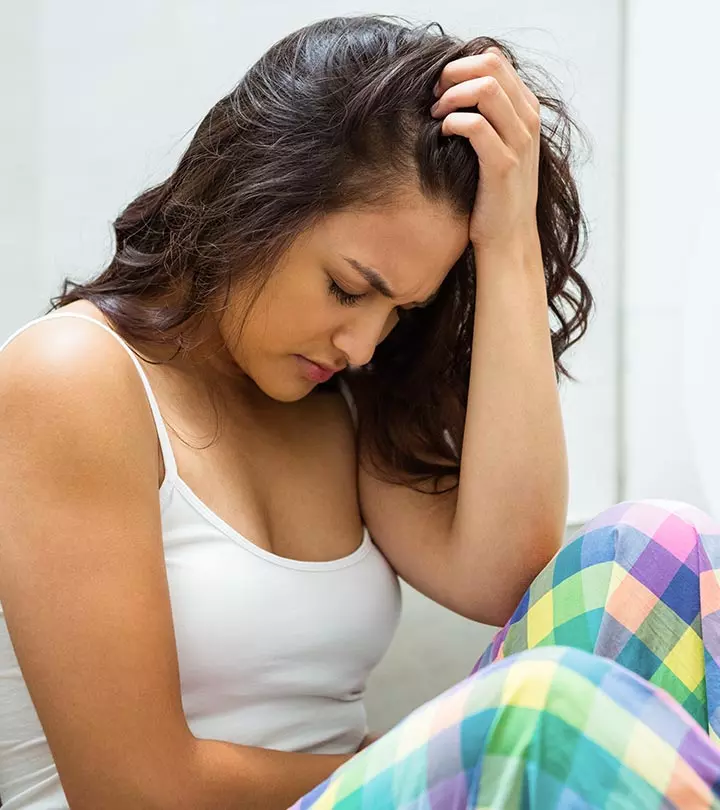
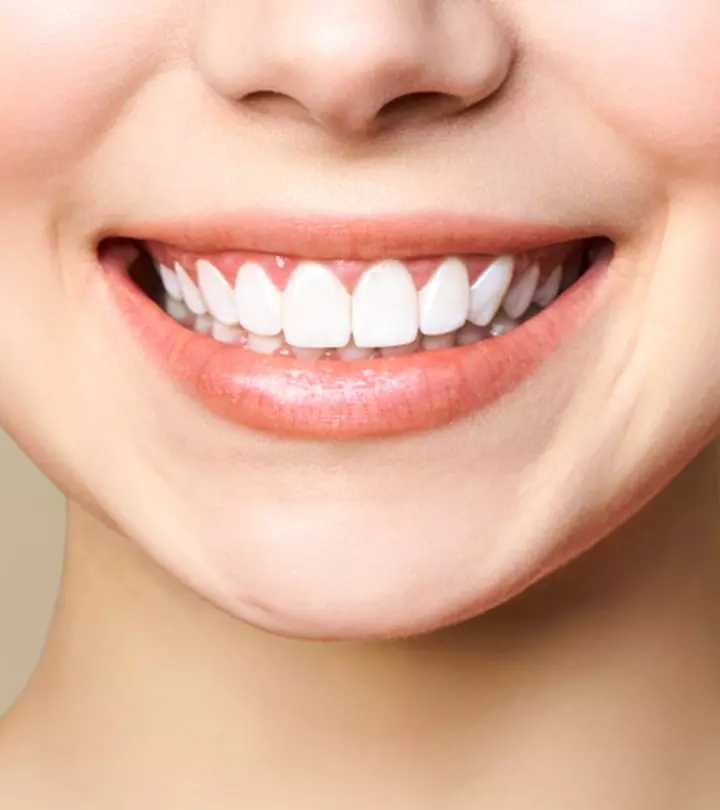

Community Experiences
Join the conversation and become a part of our empowering community! Share your stories, experiences, and insights to connect with other beauty, lifestyle, and health enthusiasts.